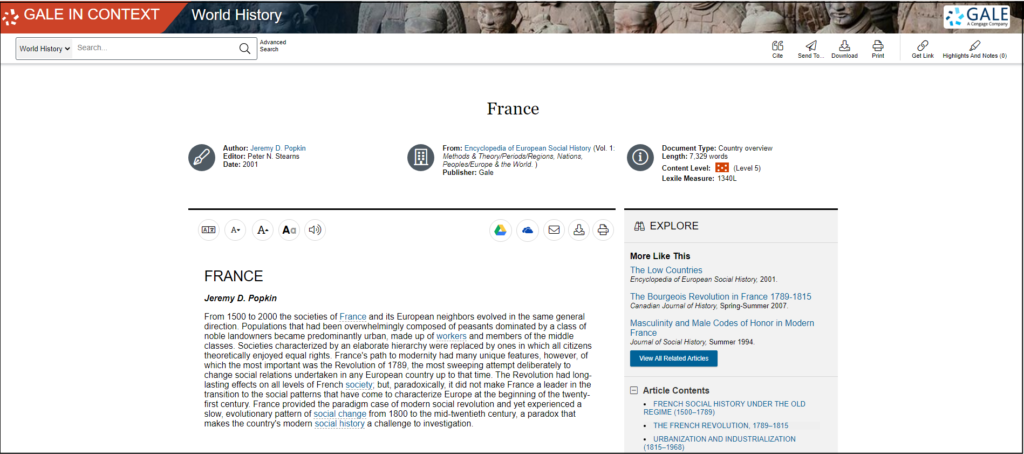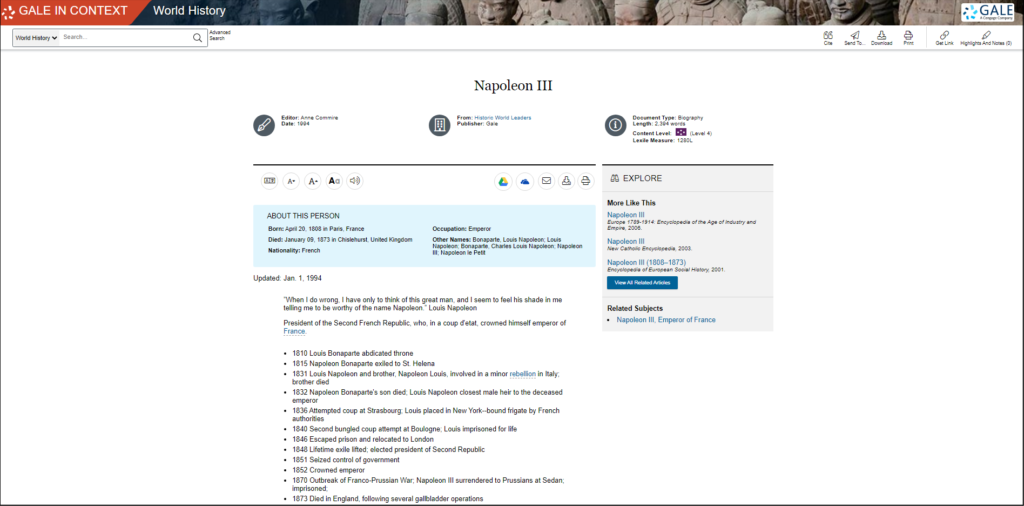| By J. Robert Parks |
Like 1968 and 1989, the year 1848 was a year of revolution in Europe. It began 175 years ago this week (February 22-24) with a revolution in France (not the French Revolution, which happened almost 60 years earlier). Rebellions in Germany, Austria, and Hungary followed in March; smaller uprisings occurred in Sweden, Poland, and Ireland; and Switzerland adopted a new federal constitution. Teachers and librarians will find a number of resources about these events in Gale In Context: World History. They can use those to educate their students about that turbulent time as well as the effects those events had on later European history.
The years from 1815 to 1848 were a time of relative political peace in Europe, as the Napoleonic Wars at the beginning of the century had exhausted people’s appetite for war. The growing Industrial Revolution, however, had created its own kind of upheaval, since traditional rural economies were transformed into ones based on factories and urban centers. This led to a growing middle class with growing economic power. But for the working class, this created economic uncertainty.
The 1848 revolution in France had several causes. Although the Industrial Revolution was slower to develop there than in England, technology and mechanization were starting to threaten the livelihoods of artisans. They joined a growing worker’s movement to make demands specifically based on class. As for middle-class Parisians, they had grown tired of the monarchy of the “Citizen King,” Louis-Philippe, duc d’Orléans. They and the working class yearned again for the democratic republicanism of the earlier revolution now that its horrors were safely in the past. Other activists, such as socialists and those in a growing feminist movement, saw an opportunity to push for even more radical ideas.
The precipitating factor, however, was a severe economic crisis that gripped France from 1845 to 1847. With Louis-Philippe having little support, the protesting crowds in Paris were able to push him to abdicate after just a few days of fighting, on February 24. The result was the Second French Republic.
The quick success of the revolution in France sparked a wave of revolutions across much of the rest of Europe. Peasant revolts began in southern Germany, and then more-elite Germans called for greater freedom and a constitutional monarchy. A national assembly in Frankfurt was established, although it was dissolved the following year.
The revolution in Hungary lasted over a year. The initial mass protests led the imperial governor (Hungary was ruled by the Austro-Hungarian Empire at the time) to accept the protestors’ demands for freedom of the press, religious equality, and the withdrawal of foreign troops. Part of the protests involved a women’s movement that demanded women be able to play a greater role in public life. Their “Demands of the Radical Hungarian Women” was published on April 29, 1848. Over time, the revolution grew into a full-fledged war of independence, as Hungary tried to separate from the empire. But it was crushed in 1849 when the Russian Tsar Nicholas I came to the aid of Austria-Hungary.
The revolutions of 1848 often faced counterrevolutions from monarchs who wanted to hang onto power. France’s Second Republic was one of the more long-lasting revolutions, but it was upended when Louis-Napoleon Bonaparte, known as Napoleon III, took advantage of the legislature’s ineffectiveness and the peasantry’s desire for order. He initiated a kind of coup d’état against himself in 1851, and then declared himself emperor in 1852.
Nonetheless, the effects of the revolutions endured. In France, the middle class continued to gain in status and power. In other countries, the revolutions inspired labor movements that would become more prominent. And though it went largely unnoticed at the time, the most influential aspect of the 1848 revolutions was a short document written by two philosophers: The Communist Manifesto, which would have a lasting impact on shaping governments in a number of countries and regions around the world.
About the Author
J. Robert Parks is a former professor and frequent contributor to Gale In Context: U.S. History and Gale In Context: World History who enjoys thinking about how our understanding of history affects and reflects contemporary culture.



